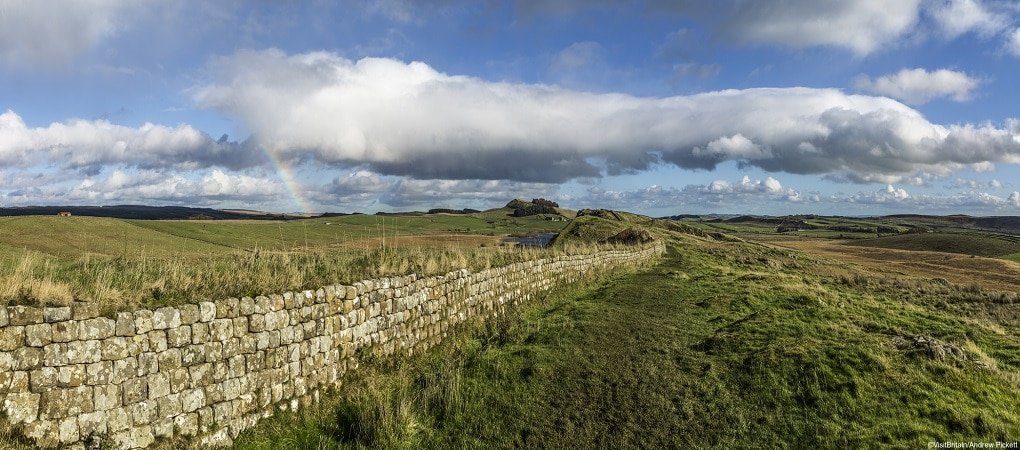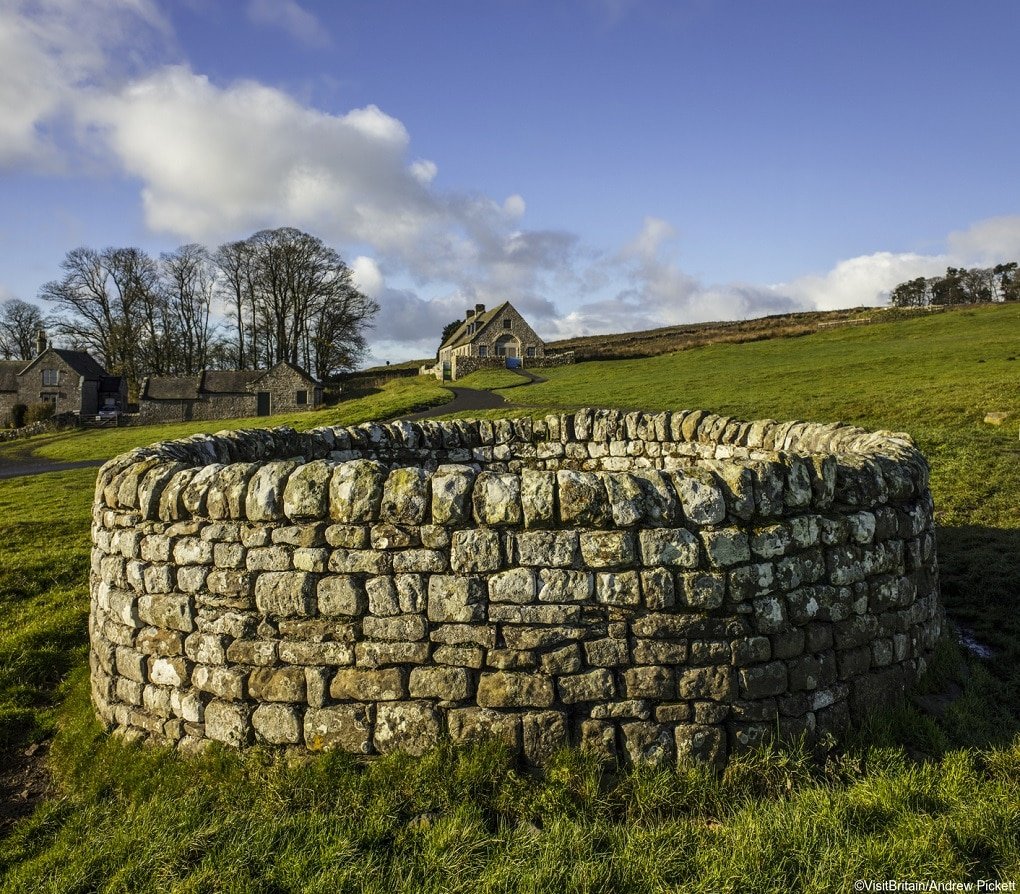
Stretching across northern England between Wallsend near Newcastle to Bowness-on-Solway in Cumbria, Hadrian’s Wall is a national landmark and a UNESCO World Heritage Site. Built during Roman times, it is now a popular walking route. And in 2022, Hadrian’s Wall is celebrating its 1900th birthday. January 24th will kick of the celebrations, which will continue until 23rd December. Read on for more details.
The History of Hadrian’s Wall
In 122AD, the Roman Emperor Hadrian came to Britain’s shores. The wall was most likely already being built a few years before, judging from archaeological finds, but it was completed in 122AD and named for the emperor. Its purpose was to defend the 73-mile long northern border of Britannia from the Picts. A project of this size had never been attempted in Europe before. Some 15,000 Roman soldiers took part in the wall’s construction. Built from stone, the wall was marked at each mile by a gate and guard towers. The wall itself was to be 15 feet high and 10 feet wide. After construction began, its width was lessened to 8 feet, and by the time of Bede, the height had shrunk to about 12 feet. Even so, it was and still is an impressive construction.
Emperor Hadrian died in 138AD. The new emperor all but abandoned Hadrian’s Wall to build one further north, to be named the Antonine Wall. (They liked having things named after them!) Later, Emperor Marcus Aurelius abandoned the northernmost option, instead revitalizing Hadrian’s Wall. Over the next few centuries, attempts to push further north were repelled by the Picts and the wall remained a key garrison point.

The Romans left Britain in 410AD and the wall, like many of their forts and buildings, were left to ruin. Some parts of the wall were dismantled in the 18th century, the stone being used to build roads. Some attempts were made to preserve sections, but even today, there is little if any protection on the remaining parts. In 1987, Hadrian’s Wall was declared a World Heritage Site. English Heritage now owns and maintains a number of sites along the route.
English Heritage Sites
More than 20 sites along Hadrian’s Wall are operated by English Heritage. These include the remains of a number of forts, as well as a few nearby priories and castles. English Heritage also offers a guidebook that covers the various locations. Some sites are free to enter while others have a fee that helps maintain them. At all points along the route, visitors should respect the landscape, not climbing on the delicate stone, and not interfering with livestock.

Walking Hadrian’s Wall
An 84-mile route alongside Hadrian’s Wall is popular with walkers who can choose to explore just segments or complete the entire route. It is possible to book a guided tour or a self-guided tour through one of the many companies that will not only send you the required maps and information, but will also take care of booking your nightly accommodation and transporting your baggage.
If you choose to make your own arrangements, you can learn more about the route at the National Trails website. Absolute Escapes offers 6-9 night itineraries, so you can plan your trip at your own walking pace, and making time for sightseeing along the way. Contours Holidays offer even more flexibility, allowing you to take between 5 and 11 nights. They can also offer dog-friendly, cycling, or trail running trips. (Note that neither of these links are affiliate ads. They’re just companies I’ve had great experiences with in the past).

Hadrian’s Wall 1900
Since 2022 marks the 1900th birthday of Hadrian’s Wall, a series of events are being planned to commemorate the landmark. This will include exhibitions, storytelling, even a Japanese-style manga depicting the history of the wall. Join a virtual walking tour on January 24th. The website details in-person and virtual events, as well as collections of activity packs to obtain for your family trip. Learn about archaeological digs, watch historical reenactments, or just find a quiet spot along the route and take a few photos.




One thought on “Join Us in Celebrating 1900 Years of Hadrian’s Wall”
Comments are closed.